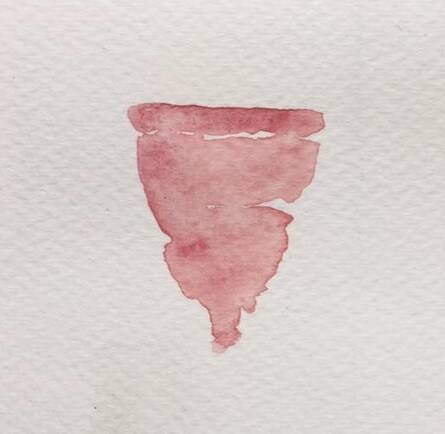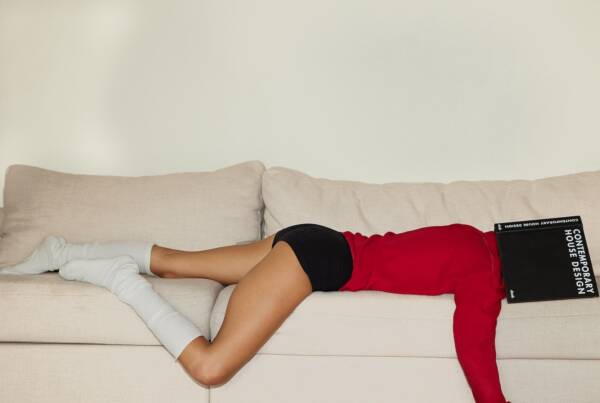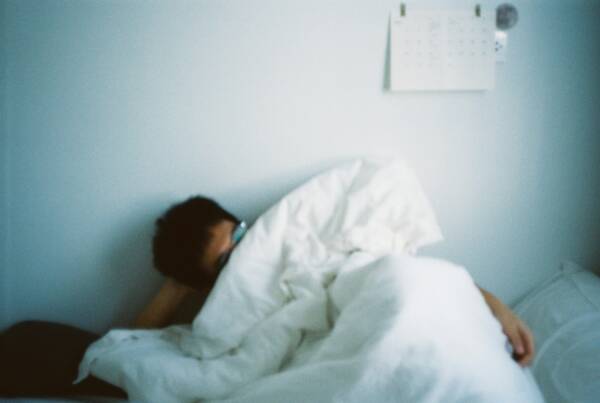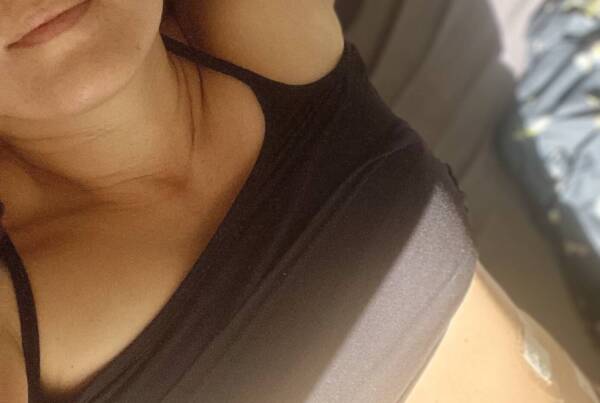Writing by Martha Hobson // Illustration by Chloe Knight
There is an undeniable stigma of shame and discretion we are taught to hold about periods: through sexual education, discomfort around openness, and menstrual products themselves. Many menstrual products both physically and symbolically reinforce this stigma. It was only when I started using menstrual cups, that I began to feel the stigma start to fall apart.
Periods have an obvious element of secrecy: girls bringing their bag with them to the bathroom, being afraid to ask other girls for a pad. I mean, there’s a whole dictionary of euphemisms for the word itself: ‘women’s troubles’, ‘girl flu’, ‘the curse’.
However, it’s also secret in a sort of sexily surreptitious way. I remember in school overhearing whispers of period gossip; girls wearing their 13 year old womanhood like pearls. It reminds me of the girl in the ‘First Moon Party’ advert, where she fakes her period with glittery red nail varnish. It’s an unhealthy, unbalanced contradiction of pride and shame.
This contradiction is unfortunately not outgrown in school hallways, it weaves its way even into the marketing of menstrual products.
Almost all feminine hygiene brands advertise with the same core ‘sell’: the ability to be active on your period. By ‘Tampax’, tampons are marketed as a symbol of liberation for women, by making periods “invisible” and “more discreet than ever”. The face of this symbolism is the beautiful blond in the short white tennis skirt, the girl in a bikini on a jet ski, sexy models showing us they are taking control from the tyrannical ‘Aunt Flo’.
But this idea of ‘freedom’ is flawed- these products still retain the reputation of periods. ‘Always’ even has an ‘Always Discreet’ line of pads. These brands exploit the shame around periods under the pretence of openness.
Menstrual cups symbolise liberation more authentically. They do not exploit stigma, but rather pull it out of shadows and expose it.
Menstrual cup brands such as Organicup try to make periods positive and make space for educated, candid conversation. They recognise social taboos, and use cups as a tool in fighting against them. By using cups you are in no way signing up to a mission or ideology, but you are supporting a sense of transparency and redefinition of periods. You don’t have to become a menstrual cup missionary (although you probably will).
Menstrual cups have the advantage of newness, they are not limited by outdated attitudes and slogans, but are rather defined by desire for change and equality. Whilst tampon and pad brands capitalise on stigma, menstrual cups focus on facing it and helping to break it down.
Tampons and pads also physically reinforce the stigma around periods. The only thing that’s really discreet about tampons or pads are the physical products themselves: small, cute, pocket-sized, ‘ultra-thin’. They’re easy to keep private, but practically, quite a nuisance. Tampons hold a third of the amount of blood as menstrual cups, they absorb all fluids (not just blood), they are disposable, they are expensive.
It is estimated that over 100 billion menstrual products are disposed of annually. Every day 4.6 million disposable period products are flushed down the toilet in the UK alone. Since almost all pads and tampons are made with plastic, it will take 500-800 years for them to decompose. Menstrual cups, on the other hand, are made from reusable medical-grade silicon. In a time where climate activism is peaking, we should be thinking about sustainable changes like this.
Even the environmental impact of menstrual products derives from the “obsession with discretion” of periods. Products are one-use, separately packaged in ‘quiet’ plastic, to be as inconspicuous as possible. Although big brands of these products try to advertise tampons as tackling taboos, the product itself quite literally reinforces it. It’s the taboo that is helping fill landfills. The tampax slogan ‘Why compromise?’ is a good question. Disposable feminine hygiene brands let stigma dictate physical appearance. Menstrual cups may be bolder in shape and advertising- they are more difficult, take a bit of ‘dare’, but they feel more discreet, and better enable you to move, play tennis, jet ski. Comparatively, tampons feel a bit like a cop-out, a compromise.
Although both cups and tampons were developed in the 1930s, the tampon industry was pushed forward: because tampons are disposable, they are money-making. A menstrual cup costs around £15 for years of a reusable, healthy way of dealing with your period. It is not a plug, or a ‘napkin’, it’s a container.
And it’s empowering to know your bodily function is not also a function of the economy, with male-majority corporations profiting off the multi-billion dollar menstrual market. Menstrual cups were invented by a midwifery group; their history is the complete opposite to that of tampons. Cups were made by women, for women, to best deal with periods.
Moreover, the sustainability of cups is not a luxury bound to the Western world. Cups are not only liberating women from the shame of periods, but also from period poverty in developing countries (and everywhere). With every cup you buy from Ruby Cup, they donate one to women without access to menstrual products. Similarly, The Cup Organisation focuses on providing girls worldwide with cups, sexual education, dignity. The symbolism so innately associated with cups of breaking taboos and promoting equality is enabled by its physical appearance as sustainable and easy. In the same way, the ‘liberation’ of tampons is inherently limited by its appearance that so clearly perpetuates stigma.
I can really vouch for menstrual cups having changed my life in a hugely positive way. Since using them, I have far less resentment for my period and can comfortably go a day forgetting I’m on it. When I first had a dig online before using cups, I was shocked I had never heard about them before. There was a unanimous conclusion from gynecologists, wikipedia, quirky blogs, cosmopolitan, that cups were better than tampons and pads. Healthier, greener, easier, more comfortable. Many people I speak to about them think cups are some sort of hyper-feminist nonsense, out of their depth or a pinch too much effort. I completely understand this sentiment- but assure you that cups deserve some consideration and perseverance. Menstrual cups are so worth it: for yourself, for the world, society, our environment, for women.
They are not only more sustainable and practical, they are a product that match the attitude we should have about periods: no-nonsense; woman-focused; unapologetic.
Let’s destroy the stigma over periods that tampons and pads reinforce. Let’s redefine how we see periods. Let’s normalise this normal bodily function.
Let’s give ‘her’ a name with no shame.







